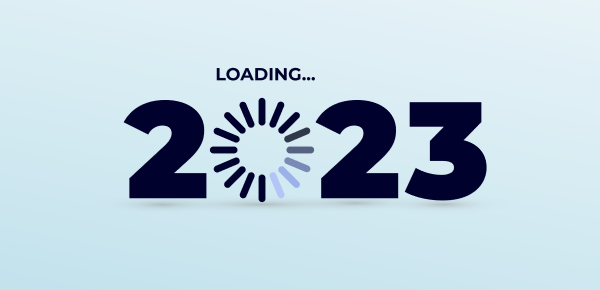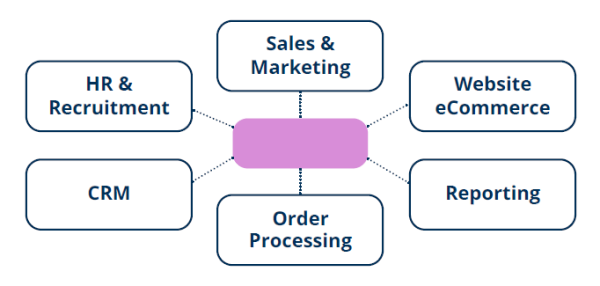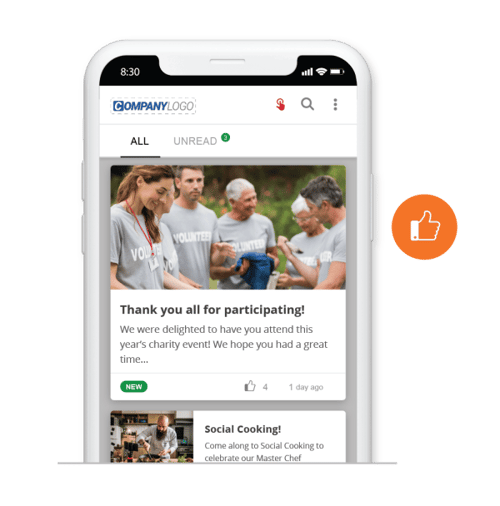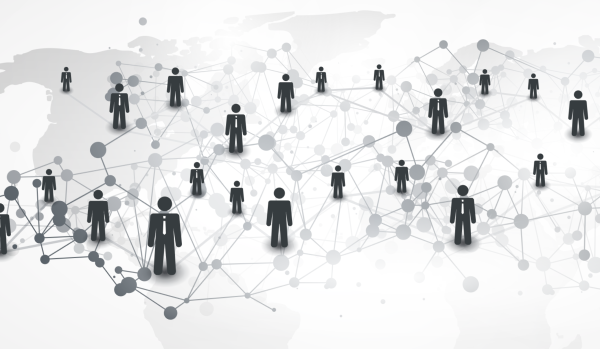
Predicting the future is a risky business these days. After all, who could have predicted how the last few years have played out?
Nonetheless, looking ahead is essential for successful businesses. Predicting what’s to come allows us to seize opportunities and mitigate threats.
We’ve compiled our top seven business trends for 2023, why you should care about them, and how we as communication specialists should adapt our messaging to respond.
From remote working and automation to social responsibility, these are the biggest internal communication trends and human resources trends you need to know for 2023. Read a summary below and download the full report for more.

1. Remote Working
Prediction: Employers will tighten up on remote working to establish a stronger, more cohesive company culture.
The huge growth in remote working, catalyzed by the Covid lockdowns of 2020, has provided cost savings and process efficiencies for both employees and employers.
And remote working seems set to stay. Forbes reports that 25% of all professional jobs in North America will be remote by the end of 2022, and remote opportunities will continue to increase through 2023.
But organizations are now starting to observe the negative effects of working from home on company culture, connection and engagement. Sixty-five percent of employers say it has been challenging to maintain morale, and more than one-third are facing difficulties with company culture and worker productivity.
In 2023, employers will reassess current hybrid working arrangements in order to rebuild culture, improve mental health and stem the tide of valuable employees 'quietly quitting'.
Recommendations:
- Build and communicate a desirable work environment before mandating more in-office time.
- Assess your current workspaces and consider what would make them more appealing – breakout spaces, informal seating, better coffee machine, standing desks etc.
- Schedule shared events to bring people from different teams together (like Friday morning teas).
- Break down departmental silos to encourage interaction.

2. Automation
Prediction: Increased automation will change the way we work, demanding a focus on upskilling and user adoption.
The digital transformation of work has been underway for years now, but the pandemic has accelerated this. A study by McKinsey and Co. found that 85% of companies have accelerated the digitization of their businesses.
Automation is the big growth area – introducing automated systems to replace what was previously done manually. That will mean some existing roles changing or becoming obsolete, but also new roles being created.
HR leaders and communicators will need to foster an environment of continual learning and development to upskill employees, streamline implementation and increase adoption. Pharmaceutical giant Unilever, for example, will spend $2.8 billion per year to upskill its entire global workforce by 2025.
Building 'digital dexterity' will be a key focus for businesses in 2023 to reap the benefits of automation while retaining a skilled workforce.
Recommendations:
- Inform staff early of planned digital transformation projects. Include staff representatives in scoping and testing.
- Manage implementation processes through a campaign of change communications.
- Create a training program tailored by role type, including follow-up, reinforcement and subsequent skills assessment.
- Use your communication platform to invite discussion with employees to assuage concerns.
3. Clarity and Certainty
Prediction: Employees will demand greater certainty of direction from employers – or they’ll go elsewhere to get it.
The last couple of years have been uncertain ones for organizations and staff. This lack of certainty around the future naturally makes staff anxious.
Employees now want a clearer picture of the future from their employer. They want to know where the business is heading and what their place in it is. They want reassurance of the business’s financial and reputational stability. And they want tangible opportunities for career growth.
More than half (53%) of workers in a recent Gallup poll said they were looking for jobs that have more security than they currently have.
In 2023, employers will need to not only engage with employees on what the future holds, but also to demonstrate commitment to their wellbeing and growth.
Recommendations:
- Increase the cadence of messaging from business leaders. Provide clear, transparent updates to build trust.
- Meet with employees to understand their goals and frustrations.
- Develop tailored development plans and provide necessary resourcing (such as training courses or mentoring).
- Identify common causes of stress or burnout and enact plans to address them.
- Personalize internal messaging to reinforce to employees that you treat them as individuals.

4. Social Responsibility
Prediction: Organizations’ social actions will become a key factor in employee engagement and competitive advantage.
Contributing to social and charitable causes has been a popular HR trend for a while now. But employees now expect employers to make a meaningful social impact and integrate this across the business.
Employees, especially Gen Z and other younger groups who make up a growing proportion of workers, will leave or avoid companies with poor records on ethics and D&I. Nearly 80% of millennials cite corporate social responsibility as one of the reasons to join an organization.
Evidence suggests that putting corporate social responsibility into action positively affects company performance. According to Gartner, the number of highly engaged employees increases 20% when the company takes action on social issues.
In 2023, the desire for work with purpose will increase. Employees want to do work that matters. To improve engagement and retention, and avoid a social media backlash, employers will need to tie the organization’s mission and values to employees’ personal principles.
Recommendations:
- Create a dedicated ESG (Environmental, Social, Governance) communication plan.
- Establish a working group with employee representatives from across the business to guide where social efforts are spent.
- Set clear company commitments and promote them on market-facing material like your website.
- Share your charity and D&I achievements in newsletters with both staff and customers.

5. Globalization
Prediction: The focus on smaller national markets will decline as employers seek the best talent from across the globe.
Geography is no longer the barrier to work it once was. It’s now easier than ever for organizations to recruit staff from anywhere in the world, and there are compelling reasons why they’d wish to.
A global talent marketplace offers unprecedented access to expertise and skills. It allows businesses to remain productive and ‘stay open’ around the clock. It also provides a valuable base from which to launch future expansion into new markets.
The globalization of work is already happening. A third of workers employed by US multinational companies, some 14.6 million people, live outside the United States. Businesses as diverse as Amazon, Xerox and Adobe recruit widely outside the US.
This will force HR teams and internal communications to use different strategies for leadership communications, onboarding, engagement and management. Globalization means greater cross-national collaboration in 2023. A celebration of differences but a commitment to unity.
Recommendations:
- Include regional representatives in all major working groups to foster connection and collaboration.
- Understand how regional audiences respond differently to company communications and tailor your messaging accordingly.
- Create a common set of standards to be applied in all your locations.
- Look for ways to bring audiences together at shared events.
Workplace Trends 2023 Whitepaper: Free Download
Get more detail on each of these workplace trends, plus two more, in this free whitepaper.
It’s packed with research, insights and practical advice – and it’s free. Just complete the form below.

